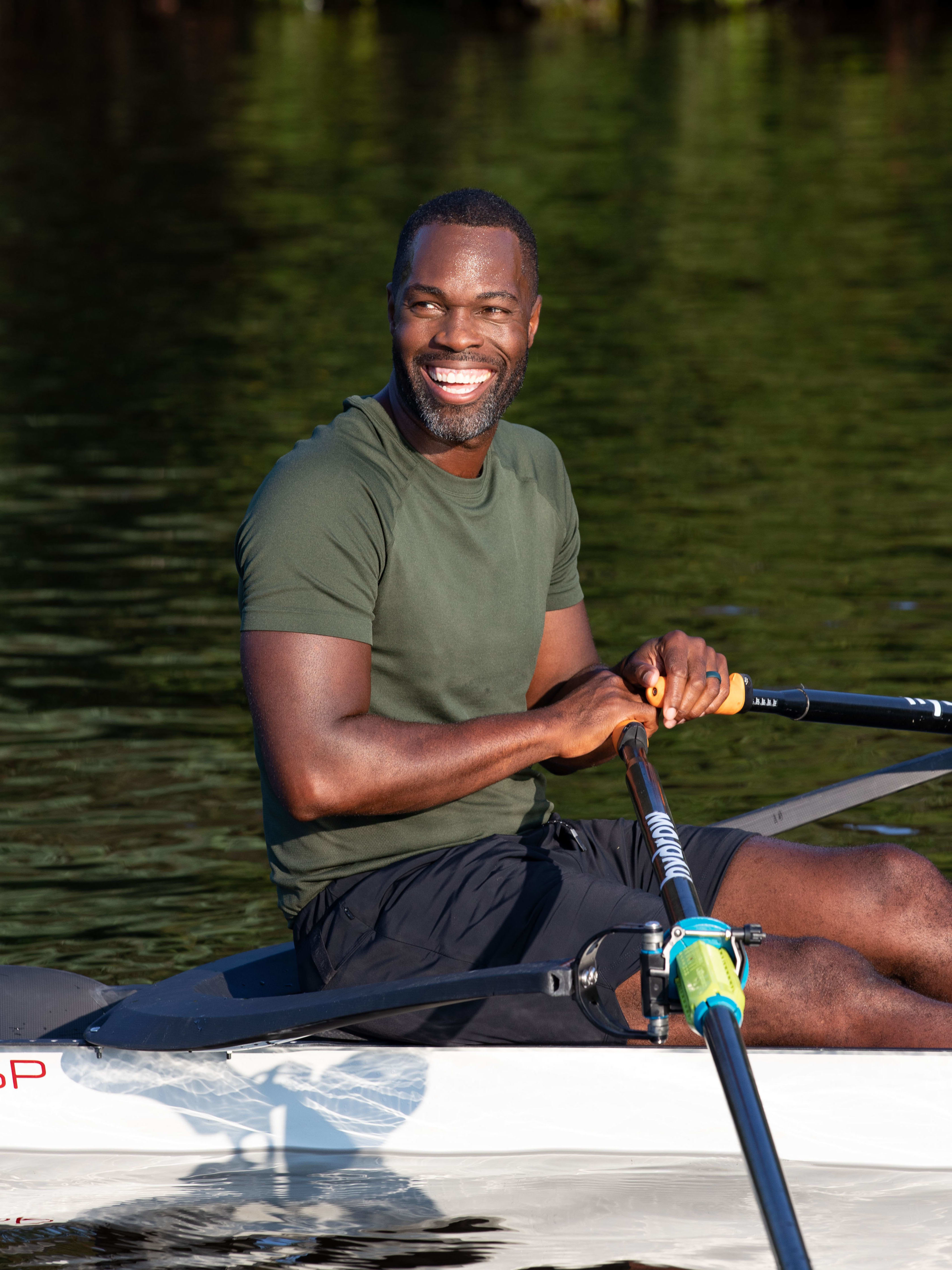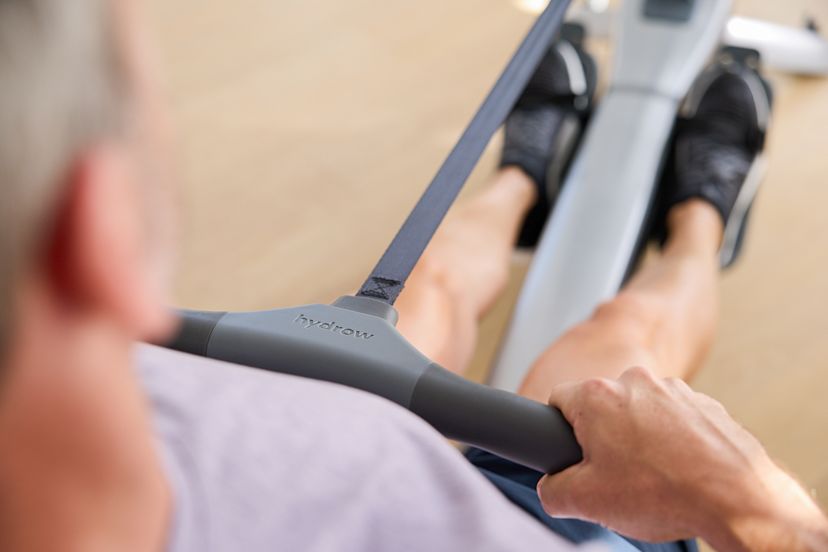The Only Rowing Terms Glossary You'll Ever Need
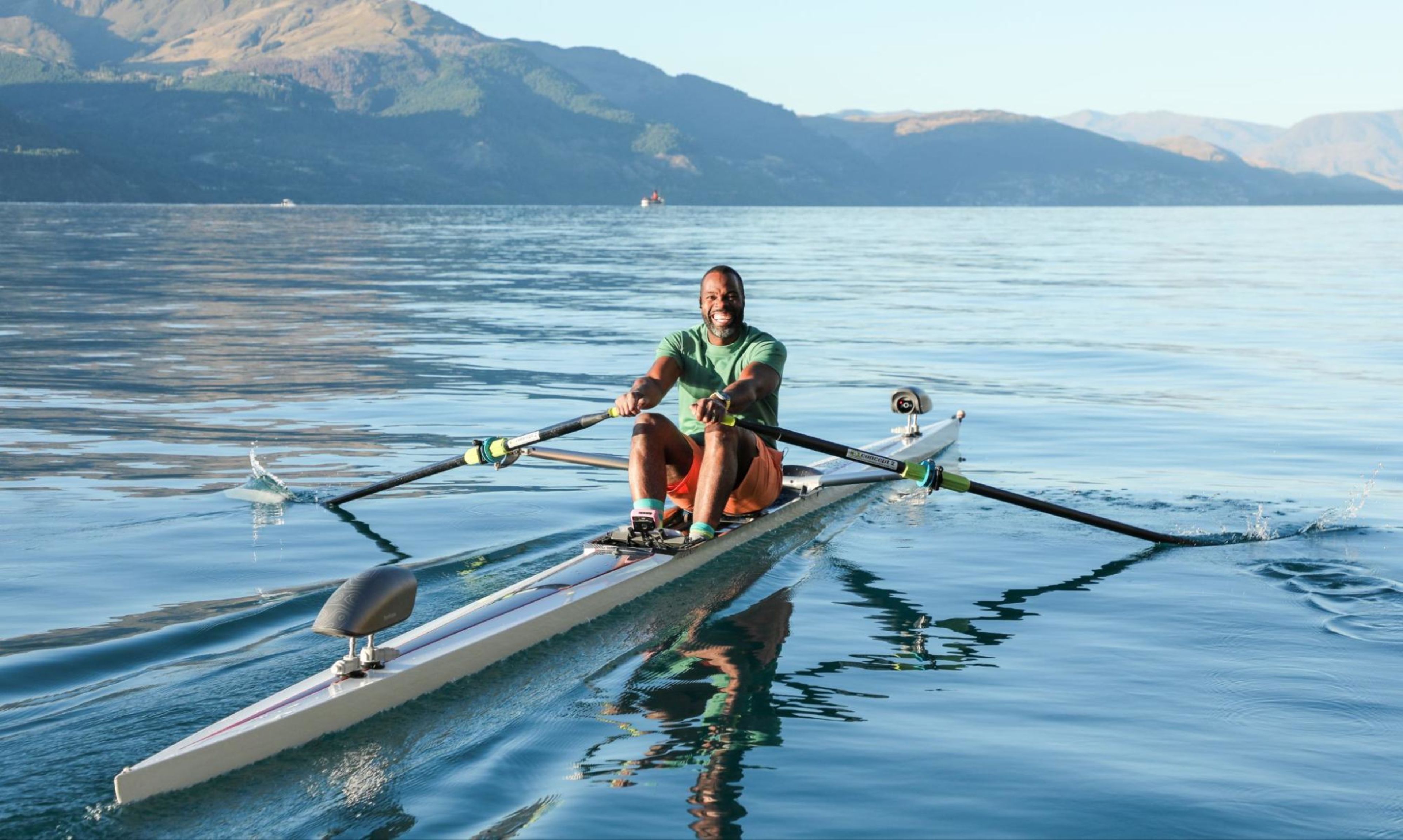
“Let’s pick it up at the Catch, blades square, for a power ten, in two! That’s it! Drive, now swing around the finish, press those legs down, step off that foot stretcher! Great, now slow down the recovery, and bring down that stroke rate!”
If you’ve ever heard a coxswain (the tiny person who steers the boat) shout the above, you may have scratched your head quizzically and wondered what in the world they were talking about. Deciphering rowing jargon can sometimes feel a bit tricky, but don’t worry—whether you’re learning how to use a rowing machine or rowing on the water, we’ve got you covered.
Here is the only rowing terms glossary you’ll ever need (first edition!), covering terms about:
Let’s dive in!
Rowing terms: The rowing stroke
Let’s start by talking about terms specific to the rowing stroke, including the major parts of the rowing stroke, how we describe the stroke, and key rowing metrics to pay attention to during your workout:
Parts of the rowing stroke
The Catch: The beginning of the Drive. This is the position in the stroke where your legs are fully compressed and your arms are extended. On a rowing machine, this is the point when you are closest to the screen. In a boat, this is the point where you are closest to the stern (we’ll define stern later!).
The Drive: The phase of the stroke where you apply power through the handle or oar handle and push your body away from the screen or stern. The Drive pushes you toward the Finish.
The Finish/Release: The end of the Drive. In this position, your handle is near your sternum and your core is engaged as you lean back with your shoulders past your hips toward the back of your rower. In a boat, this position is also called the Release, as it is the point at which the blade of the oar exits the water and your body is closest to the bow of the boat.
The Recovery: The phase of the stroke where you move your body from the Finish back to the Catch to begin the stroke again.
Stroke: The stroke (or rowing stroke) consists of the four positions and phases above. It is the motion that takes you from the Catch to the Finish.
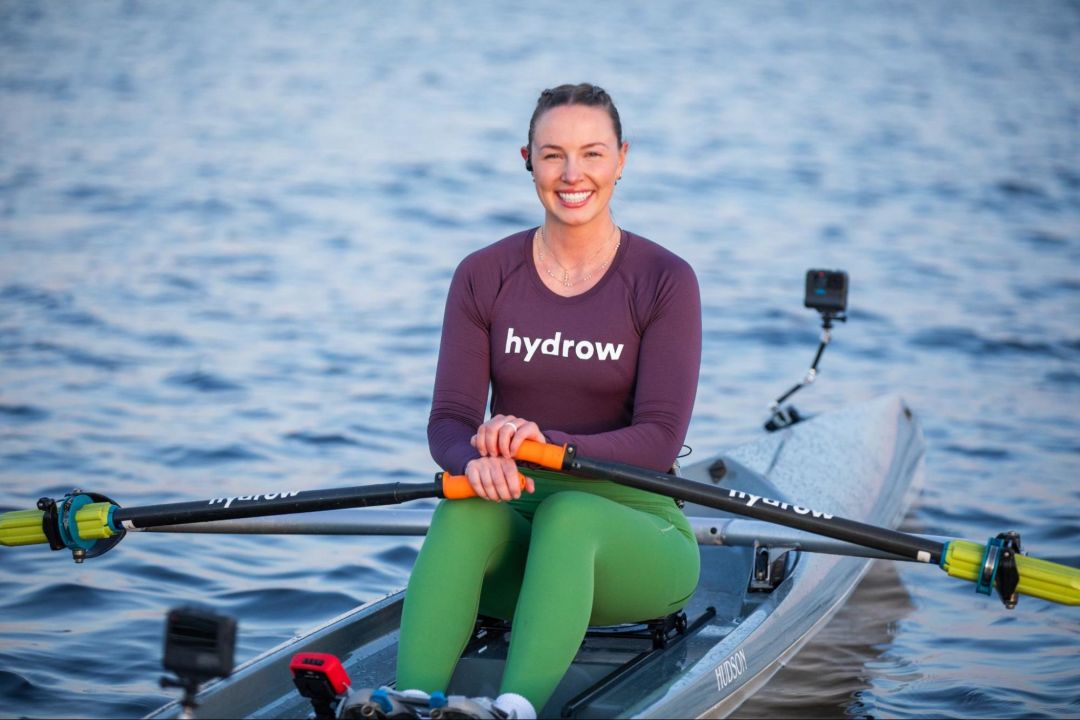
Did You Know?
Over 90% of Hydrow members are still active one year later.
Rowing terms to describe the stroke
Sequence: The rowing stroke has a well-defined sequence that describes how your body moves. Starting at the Catch, you engage your legs, followed by a “swing” or “pivot” of your core. Finally, you’ll engage your arms, at which point you’ll arrive at the Recovery. At the Recovery, you push away your arms, swing your core over your hips, and compress your legs until you arrive at the Catch.
Ratio: The relation of the amount of time spent on the Drive versus the amount of time spent on the Recovery. The Drive is the most explosive part of the stroke and where speed is generated. Your Recovery speed can vary depending on your stroke rate and end effort.
Strokes per minute (SPM): The number of strokes taken in a single minute.
Stroke rate: The number value of strokes per minute. For example, a boat that takes 32 SPM has a stroke rate of 32.
Split: The speed! In the water, speed is normally measured as the amount of time it takes a boat to travel 500 meters. So, the lower your split, the shorter the amount of time it takes you to travel 500 meters, and the faster you are going. On a rowing machine, your split is basically the same thing, except each manufacturer has a special sauce to convert the force that you apply to the rowing machine to a split.
Rowing shell terminology
Now that we’ve talked about stroke terms, let’s take a look at the different terms you’ll hear about rowing shells (aka boats!):
Shell: This term can be used to describe a boat in its entirety or specifically the hull of the boat, excluding the riggers, seats, and slides.
Riggers: Metal tubes or carbon wings that attach to the shell, usually along the gunwales. The riggers hold the oarlock.
Oarlock: A U-shaped attachment that holds the oars. The oarlock rotates, allowing the oar to move along with the rower as they execute the stroke.
Gunwales: The upper edge of the side of the boat.
Foot stretcher: The part of the boat where you put your feet. Normally, there are special shoes attached at the ball of the foot but free at the heel, allowing you a wider range of motion and an easy way to escape the boat, if needed.
Seat: The spot where you sit on the boat, the seat usually has wheels that run along the tracks or slide.
Tracks or slide: The rails used to guide the wheels of the slide to move from the stern to the bow and prevent the seat from moving to the left or right.
Rudder: The system used to steer the boat. The boat is steered by the coxswain when one is present. However, when there is no coxswain, the rudder is attached to one of the shoes on the foot stretcher and the person in that seat with the “toe” steers the boat.
Fin: A small, fixed blade attached to the underside of the boat that provides stability and helps the boat maintain a straight course by minimizing side-to-side movement in the water.
Stern: The rear or aftmost part of the boat. In a boat race, this is the last part of the shell to cross the finish line.
Bow: The front or foremost part of the boat. In a boat race, this is the part of the boat that crosses the finish line first.
Bow ball: A rubber component placed on the bow of the shell to lessen damage or prevent injury in case of a collision. The bow of a shell is normally very pointy, so the bow ball covers that point.
Oar: The handle, shaft, and blade used by the rower to propel the boat forward. The oar is placed in the oarlock, and the rower holds onto the oar with their hands.
Port: The left side of the boat when looking from the stern to the bow.
Starboard: The right side of the boat when looking from the stern to the bow.
Rowing terminology: Types of rowing shells
Depending on the number of oars held by each rower or the number of athletes in a boat, rowing shells have different names:
Sweep: A boat in which each rower holds one oar. You need at least two rowers to row a sweep boat.
Scull: A boat in which each rower has two oars. You only need one rower to scull.
Coxswain: The person responsible for steering the boat. They are required for eights, but may be optional in force, pairs, or quads.
Eight, Four, Pair: Sweep boats. Eights have eight athletes, plus a coxswain. The four has four athletes and may or may not have a coxswain. The pair has two athletes and may or may not have a coxswain.
Quad, Double, Single: Sculling boats or sculls. Quads have four athletes, each having two oars, and may or may not have a coxswain. A double has two athletes, and a single has one athlete.
Rowing terms: Odds and ends
So, we’ve covered the stroke and the boat—now, let’s talk about some of the terms you might hear both on and off the water! What are coxswains saying to increase their athletes chances to advance to a final at a regatta? What are trainers saying to encourage their classes to improve their splits?
Power 10, Power 20: A series of 10 or 20 strokes where you are prompted to go a little bit harder.
Suspension/connection: The sensation felt in the lats when the stroke is executed correctly.
Ready all: A command shouted by the coxswain to prepare you to row.
Feathering: The motion of turning the oar handle so that the blade is parallel to the water. This normally happens when the seat is closest to the bow.
Catching a crab: When the blade, oar, or both get stuck in the water in a way that you cannot extract it. This can cause the boat to slow down significantly or even cause you to be ejected from the boat!
Stroke seat: The person closest to the stern of the boat who is responsible for setting the rhythm and communicating with the coxswain, if there is one.
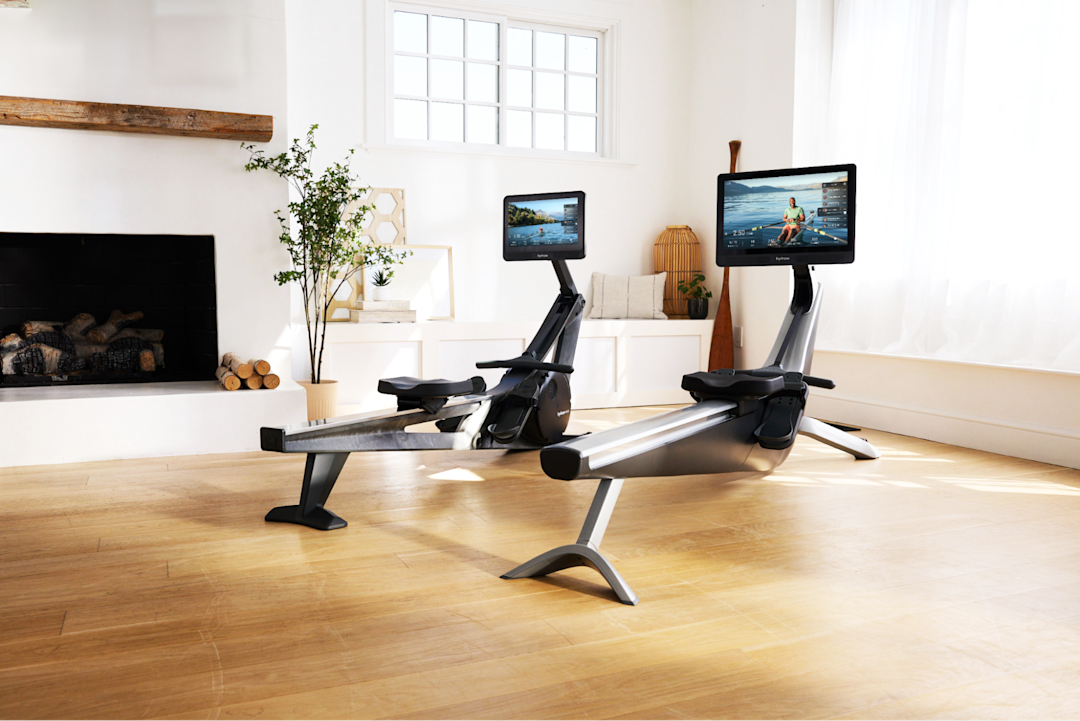
Considering a Hydrow rowing machine? We tackle all your burning questions in our FAQ guide.
Kickstart your rowing journey with Hydrow
If your head is spinning, we understand—there are a lot of rowing terms out there to wrap your head around! Don’t be intimidated, though. By hopping on a rowing machine or trying your hand at outdoor rowing, you’ll naturally come to learn each of these pieces of rowing terminology and become an expert in no time.
If you’re new to rowing and looking to invest in an indoor rower for your home, be sure to check out Hydrow. Our state-of-the-art rowing machines are the perfect addition to any home gym, giving you an immersive and total-body workout in just 20 minutes a day.
Hydrow’s extensive library of workout content is led by our team of world-class and Olympic Athletes and filmed in stunning locations around the world. Our Athletes also provide the instruction and guidance you need to get up to speed on rowing terminology and best practices, especially if you’re new to the sport.
Learn more about the benefits of a Hydrow rowing machine today!

Explore Hydrow
Learn more about how you can transform your fitness routine with a rowing machine.
